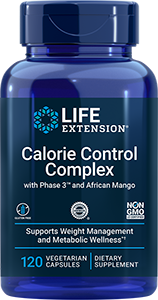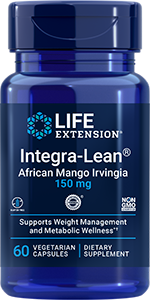 |
July 1, 2011 |
Soluble fiber helps bust belly fat |
|
In an article published online on June 16, 2011 in the journal Obesity, researchers from Wake Forest Baptist Medical Center in Winston-Salem, North Carolina report an association between increased intake of soluble fiber and a reduction in visceral or belly fat which surrounds the body's organs and is considered the most dangerous type of adipose tissue. "We know that a higher rate of visceral fat is associated with high blood pressure, diabetes and fatty liver disease," explained lead researcher and Wake Forest assistant professor of internal medicine Kristen Hairston, MD. "Our study found that making a few simple changes can have a big health impact."
Dr Hairston and her colleagues evaluated data from 1,114 African-American and Hispanic participants in the Insulin Resistance and Atherosclerosis (IRAS) Family Study. Physical examinations were conducted, and visceral and subcutaneous fat was measured via computed tomography (CT) upon enrollment and after five years. Dietary intake over the previous year was reported during the five year follow-up visit.
Although consuming more soluble fiber was not associated with the accumulation of less subcutaneous fat, an association with decreased visceral fat accumulation over time was observed. For each 10 gram increase in soluble fiber consumed daily, a 3.7 percent reduction in visceral fat accumulation over the five year follow-up occurred. The study also revealed a 7.4 percent reduction in the rate of visceral fat accumulation when those who were moderately physically active were compared to less active subjects.
"There is mounting evidence that eating more soluble fiber and increasing exercise reduces visceral or belly fat, although we still don't know how it works," Dr Hairston stated. "Although the fiber-obesity relationship has been extensively studied, the relationship between fiber and specific fat deposits has not. Our study is valuable because it provides specific information on how dietary fiber, especially soluble fiber, may affect weight accumulation through abdominal fat deposits."
Soluble fiber is found in fruit, vegetables, beans and peas, in contrast with insoluble fiber such as wheat bran. Dr Hairston plans to conduct a clinical trial later this year to test whether consuming a soluble fiber supplement elicits a similar benefit as that suggested by the current research. |
|
 |
 |
|
Roughly one-third of the American population suffers from nonalcoholic fatty liver disease or NAFLD (Polyzos et al 2010, Schuppan et al 2010, Younossi 2008). Many of its victims don’t know they have it. NAFLD can go undetected for years and may eventually progress to inflammation and scarring of the liver (cirrhosis) and, in some cases, full-blown liver failure.
NAFLD starts off as a low-level disturbance characterized by dull right upper-quadrant abdominal discomfort and fatigue in most patients, but it is hardly benign (Raszeja-Wyszomirska et al 2008). Early NAFLD can ultimately progress to a more serious condition, nonalcoholic steatohepatitis or NASH (Musso et al 2010).
NAFLD and NASH are progressive conditions that require patient collaboration with a qualified physician. Because the liver metabolizes many nutrients and drugs, it is important that liver patients not add any substances to their regimen without cooperation and close monitoring by a qualified physician. The goals of therapy are:
- Reduce the accumulation of fat in liver tissue by decreasing new fat synthesis and increasing utilization of existing fat stores in the liver.
- Minimize free radical production, and enhance free radical scavenging in liver tissue
- Reduce or eliminate the inflammatory responses of fat-infiltrated liver tissue to prevent progression of NAFLD to the more deadly NASH, which is a precursor of liver failure.
The following supplements have been shown to boost liver health and help manage NAFLD:
- Vitamin E—800 IU daily includes at least 200 mg gamma tochopherol.
- Omega-3 fatty acids—700 mg EPA and 500 mg DHA daily
- Metformin—500 mg three times daily
- S-adenosylmethionine (SAMe)—1200 mg daily
- N-acetyl cysteine (NAC)—1200 mg daily
- Silymarin (milk thistle extract)—900 mg daily
- Polyenylphosphatidylcholine (PPC)—900 mg daily
- Trans-resveratrol—500 mg daily
|

Life Extension® has researched weight loss for you, from the inside out … how to modulate absorption of sugar and fat calories, how to control appetite and emotional overeating. We’ve even explored the effects of sleep deprivation on weight control. And we’re here to help you take back control!
Get started today with these science-based formulations that deal with the molecular factors that keep the weight on. Use them alone or in combination for a multi-pronged attack on fat. They’re priced right now at savings that will trim your budget and jumpstart your weight loss program.
Call toll-free 1-866-467-1352 anytime. But don’t delay! This Weight Loss Sale ends August 1, 2011.
These supplements should be taken in conjunction with a healthy diet and regular exercise program. Results may vary.
https://www.lifeextension.com/weightloss
|
|
 |
  |
Ceramides have been available to Japanese women as a functional food since 2000. The hydrating action of Lipowheat™ ceramides has proven so effective in clinical trials, they’re now approved as a dietary ingredient by the FDA. For example, after three months of ingesting 200 mg a day of Lipowheat™, a group of people suffering from dry, flaking skin reported dramatic improvement in the look and feel of their skin. These results were verified by electrochemical analysis showing that 95% of participants exhibited improved skin hydration. Better yet, all subjects who experienced chronic itching at the onset of the study reported sharply decreased itching or complete elimination of the problem by the end of the study. |
|
|
Vitamin B6 Capsules

 |
Vitamin B6, or pyridoxine, is an important component of the coenzyme PLP, which metabolizes amino acids. Because of its amino acid transfer ability, the body can produce non-essential amino acids from available amino groups, as well as metabolize protein and urea. Vitamin B6 is essential because of its participation in more than 100 enzymatic reactions, including protein metabolism, conversion of tryptophan to niacin, and neurotransmitter function, among others.
Found in foods such as eggs, brewer’s yeast, carrots, chicken, fish, brown rice, whole grains, and cabbage, vitamin B6 (along with B12 and folic acid) plays a beneficial role in maintaining already healthy homocysteine levels within normal range. |
|
|
|
 |
Life Extension Update
|
What's Hot
|
Life Extension® Magazine
|
|
| Integra-Lean® Irvingia is protected by U.S. Patent No. 7,537,790. Other patents pending. Phase 3™ is used under license. Lipowheat™ is a trademark of LAVIPHARM Group of Companies. 7-Keto® is a registered trademark of Humanetics Corporation.
If you have questions or comments concerning this issue or past issues of Life Extension Update, send them to ddye@lifeextension.com or call 1-800-678-8989.
www.lifeextension.com
Sign up for Life Extension Update
For Customer Service inquiries, please email customerservice@lifeextension.com or call 1 800 678 8989.
For copyright permission, please refer to Life Extension copyright policy.
|
|






















